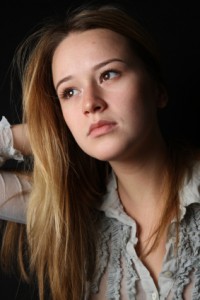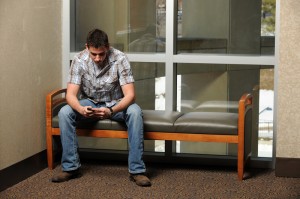You might know it as “the winter blahs” or “the rainy day blues,” but seasonal affective disorder (SAD) is more than just a temporary change in mood. SAD is a form of major depression that occurs at certain times of the year, especially in the winter or fall when the days are shorter. In northern regions farther from the equator, where winter nights are very long, SAD is more common. Seasonal depression usually subsides once spring beings, but there is a rare form of SAD that occurs during the warmer months. According to the Cleveland Clinic, SAD affects up to 6 percent of the American population, and one-third of the people who suffer from SAD are women ages 20 through 40.
If you have SAD, you may experience depressive symptoms that occur predictably at certain times of the year. People with this disorder may use drugs or alcohol to relieve their feelings of low energy, hopelessness or despair. Once your condition has been accurately diagnosed and treated at a professional rehabilitation facility, you may have a new sense of hope and a new motivation to conquer your substance abuse.
Causes of SAD
It’s not uncommon to feel a little less energetic or to experience the occasional episode of cabin fever during the long winter months. But if you suffer from SAD, these feelings become so persistent and overwhelming that you can no longer function normally. The cause of SAD remains unknown, but the American Academy of Family Physicians notes that the condition has been linked to the availability of light at certain times of year.
In people who have SAD, the lack of sunlight may interfere with the body’s biological rhythms, causing low energy levels, weight gain, sadness and other symptoms of depression when the days are short. Light can also affect the body’s release of hormones like melatonin, which helps to regulate your sleep, and neurotransmitters like serotonin, which affects mood stability.
SAD Versus Other Forms of Depression
 SAD is similar in many ways to other forms of depression. You may experience these characteristic depressive symptoms:
SAD is similar in many ways to other forms of depression. You may experience these characteristic depressive symptoms:
- Increased irritability or anxiety
- Feelings of despair or hopelessness
- Social isolation
- Sleep disturbances
- Tearfulness
- Changes in eating habits
With SAD, in particular, depressive symptoms are associated with increased fatigue, sluggishness and weight gain. In the fall and winter, you might experience:
- Difficulty focusing on specific tasks
- A strong desire to sleep
- Cravings for starchy or sugary foods
- Weight gain
- Physical or mental exhaustion
If you have summer SAD, an uncommon condition that may be caused by high temperatures or humidity rather than light patterns, you may have a loss of appetite, weight loss, and difficulty falling or staying asleep. With either form of SAD, you may also experience an increased desire to drink or use drugs at certain times.
SAD doesn’t always respond to the same treatment strategies that are commonly used for major depression. You might feel that you really don’t need therapy or medication at certain times of the year, but if you’ve experienced seasonal depression for two or more years in a row, you might need treatment that targets your need for additional light at specific times of year.
Is There a Relationship Between SAD and Addiction?
 When you’re feeling depressed, it might seem natural to have a drink or use stimulants like meth or cocaine to make yourself feel better. In many people who suffer from SAD, the condition goes undiagnosed, increasing the risk that they will use drugs or alcohol to “manage” their symptoms. A case study published in the International Journal of Neuroscience suggests that there may be a link between drug cravings and light availability in cocaine users who have seasonal depression, and that light therapy may help relieve both the depression and the urge to use drugs.
When you’re feeling depressed, it might seem natural to have a drink or use stimulants like meth or cocaine to make yourself feel better. In many people who suffer from SAD, the condition goes undiagnosed, increasing the risk that they will use drugs or alcohol to “manage” their symptoms. A case study published in the International Journal of Neuroscience suggests that there may be a link between drug cravings and light availability in cocaine users who have seasonal depression, and that light therapy may help relieve both the depression and the urge to use drugs.
Alcohol abuse has also been associated with seasonal depression. According to Comprehensive Psychiatry, seasonal patterns of heavy drinking may be a red flag for SAD. The journal also reports that there may be a genetic link between alcoholism and the tendency to experience depression at certain times of year. Alcohol may be used to elevate mood when you’re depressed, but in fact, this central nervous system depressant can ultimately worsen your symptoms, contributing to fatigue, sadness and weight gain.
Treatment for SAD
Light therapy, or phototherapy, has proven effective at treating mild to moderate symptoms of seasonal depression, states the National Alliance on Mental Illness (NAMI). NAMI reports that with regular light therapy, between 50 to 80 percent of people who experience SAD may have a complete remission of their symptoms, as long as they’re consistent with treatment. Treatment involves exposure to a specific type of white fluorescent light for 20 minutes to one hour each day. The intensity of the light, the time of day and the length of exposure should be tailored to the needs of the individual to achieve the maximum benefit.
Antidepressant medications may be needed if you have severe symptoms of SAD, such as suicidal thoughts, or if phototherapy isn’t effective. You may be prescribed antidepressants before fall begins, so that the medication will have time to take effect before the light changes.
If you have a substance use disorder combined with SAD, it’s important to receive treatment for both conditions. At a dual diagnosis rehabilitation program, you can be evaluated and treated for seasonal depression as well as alcoholism or drug addiction. It may come as a tremendous relief to find out that there’s a reason why you feel lethargic and sad at certain times of the year, and why your cravings for drugs or alcohol intensify when fall and winter begin.
Axis offers a complete set of resources for clients with co-occurring mental health disorders. To get the comprehensive care you need to lead a sober, healthy life, contact our admissions counselors for information about our individualized treatment plans.


